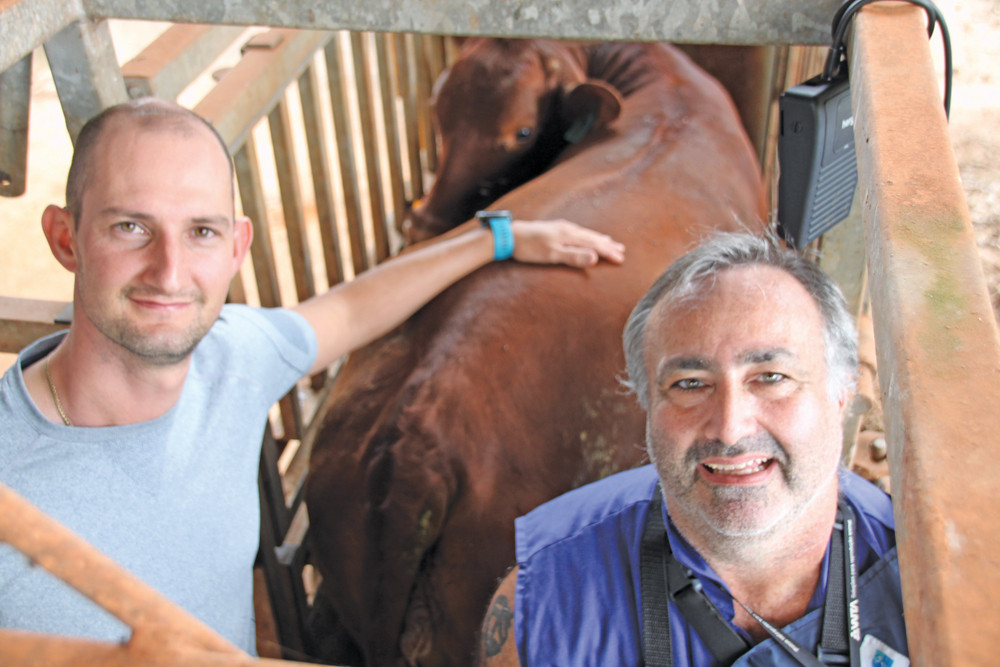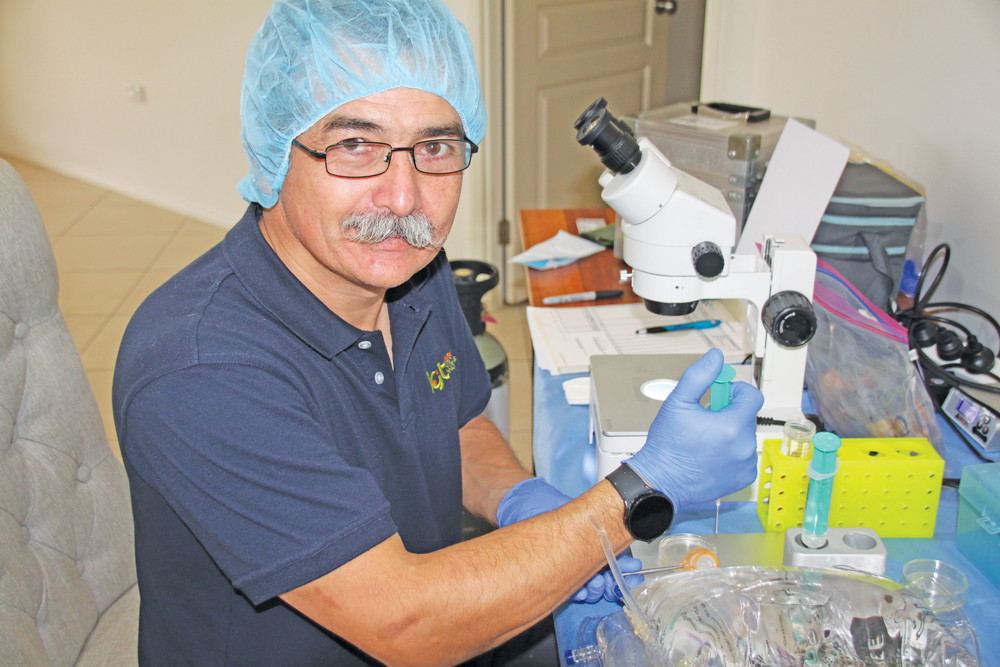On The Land
29 June, 2022
Local vet pursues IVF cattle dream
ZANE Squarci has spent his whole life around livestock and it has always been his dream to buy a cattle property of his own once he had built his herd numbers sufficiently on his agistment block at Mourilyan.

He began his Red Brangus stud, “Carci” with a handful of artificially-inseminated stud cows from Theodore a few years ago and is now working on their progeny.
He is on a mission to increase both numbers and quality at “Carci” and, eventually, to buy a property to run them on.
Zane believes the best way to achieve his goals is through the use of assisted reproductive technology, using Artificial Insemination (AI) and In Vitro Fertilisation (IVF) to harvest good quality genetics and recipient cows to speed up the process.
He selected his four best cows, based on fertility, growth and temperament and has had the donors' eggs aspirated – a process also known as The Ovum Pick Up technique by Brisbane-based biotechnology company, Inventia Genetic Technologies (IGT).
The IVF process involved the transvaginal removal of the oocytes (bovine reproductive eggs) by aspiration of the ovarian follicles with the aid of an ultrasound probe.
This procedure is absolutely harmless to the donor and the time taken for the collection was 15-20 minutes per cow.
Dr Squarci, a director of the Tropical Vet practice at Innisfail, was thrilled with the results, netting a total of 30 viable eggs from one of the cows and 78 in total.
“I would be happy with 10 eggs per cow as that is equivalent to achieving a lifetime of production in one year,” he said.
IGT Field lab technician Cesar Castaneda explained the post-harvest process.
“After separation, the oocytes are put into Petri dishes under the microscope and classified by viability.
The medium chance or ‘denuded’ oocytes are kept in reserve and the poorlyrated atresics, which account for up to 15 per cent of the total are discarded.
“The best of the eggs will be chosen and we will take them back to the laboratory in Brisbane, where they will be fertilised with customer selected and supplied semen within 24 hours and grown into a ‘blastocyst’ (an embryo ready for transfer into a recipient cow).
“Within seven days of fertilisation, the embryos are placed in 37 degree incubators and brought back to the property, where they are transferred into recipient cows.
If no cows are available, the embryo will be frozen and stored at that stage.”
As a veterinarian himself, Dr Squarci appreciates the value of expertise when it comes to bovine assisted reproductive techniques.
“I am trying to build my female numbers at the moment and I couldn't replicate IGT's level of skills and equipment,” he said.
“For a while now, I have been trying to import sexed semen from the United States to speed up the development of my breeder herd, but there's a lot of red tape involved in that process.
“There is a chronic large animal vet shortage at the moment and we are so busy that I am better off paying these guys, especially when they are getting such good results.
I only need one dose of semen to fertilise all 78 eggs, so I can get a run of quality calves on the ground for $1,000 a head.”

The Innisfail-born and bred vet said he wanted a highly fertile, moderately framed breeding herd that produced a calf annually within a 12-week joining window.
Any falling outside those specifications would be culled.
“I prefer the Red Brangus because I think they handle the heat and the flies better than the black cattle, but still have all the carcase attributes the breed is noted for.
Eventually, I want to produce high growth, early finishing animals with the right fat content to suit the feedlot market.
“Sections of the ex-cane growing country I have my cattle on at the moment go underwater during the wet season and crocs can be a bit of problem until the land re-emerges again.
“I have the cattle on a Mareeba supplementary feed program at the moment to address the soil deficiencies caused by the flooding.
“North Queensland in general is 20 odd years behind New South Wales in the assisted reproductive technology field, but it is undergoing significant growth up here as more people realise it is the best way to quickly advance herd growth and genetic improvements.”
Dr Squarci completed his Bachelor of Veterinary Science at James Cook University and worked at the Ingham Tropical Vet practice for a few years before returning to settle into the Innisfail business over seven years ago.



